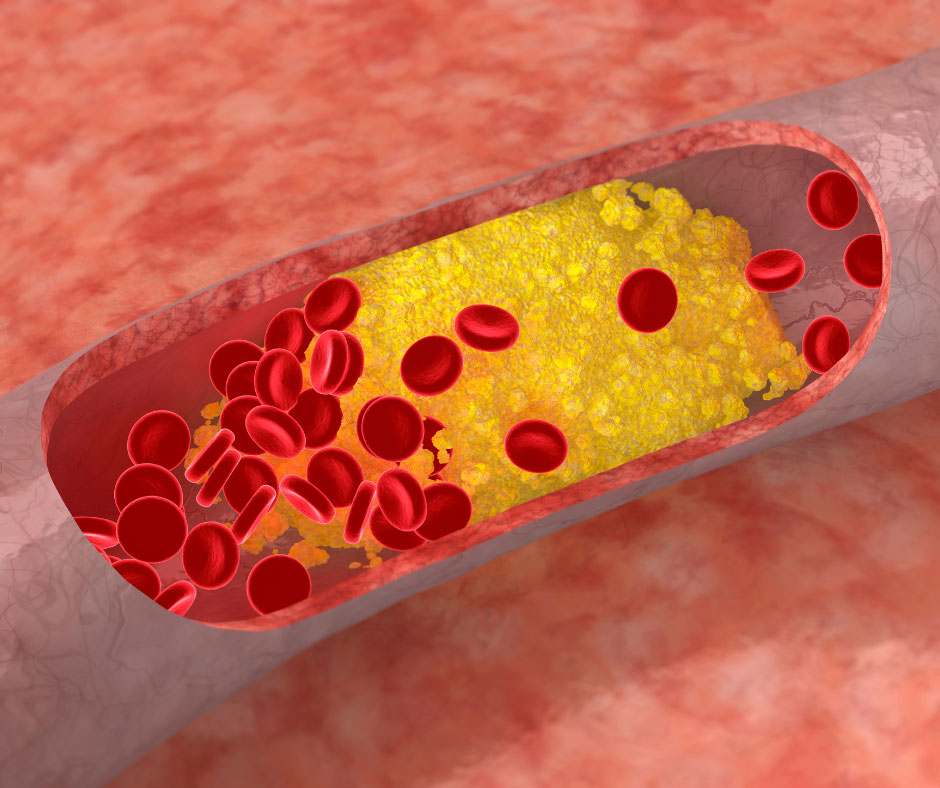Keep your heart healthy by limiting your intake of saturated and trans fats. Limiting how much saturated and trans fats you eat is an important step to reduce your blood cholesterol and lower your risk of coronary artery disease. A high blood cholesterol level can lead to a buildup of plaques in your arteries, called atherosclerosis, which can increase your risk of heart attack and stroke. To reduce the saturated and trans fats in your diet, follow these simple guidelines:
- The best way to reduce saturated and trans fats in your diet is to limit the amount of solid fats — hydrogenated fats (shortening, lard) and animal fats (butter, cream) — you add to food when cooking and serving. When you do use fats, choose monounsaturated fats, such as olive oil, or safflower, sunflower or canola oils. Polyunsaturated fats, found in certain fish, avocados, nuts and seeds, also are good choices for a heart-healthy diet. When used in place of saturated fat, monounsaturated and polyunsaturated fats may help lower your total blood cholesterol. But moderation is essential. All types of fat are high in calories.
- Eat more fruits and vegetables.
- Eat more fish and chicken. Substitute ground turkey or chicken for ground beef. Remove the skin from chicken before cooking.
- Eat leaner cuts of beef and pork, and trim as much visible fat as possible before cooking.
- Bake, broil, or grill meats; avoid frying, and breaded meats and vegetables.
- Use fat-free or reduced-fat milk instead of whole milk. Instead of sour cream, try nonfat plain yogurt or a blend of yogurt and low-fat cottage cheese. Use low-fat cheeses and make cream and cheese sauces with low-fat milk and cheese.
- In recipes, use two egg whites instead of one whole egg.
- Instead of chips, snack on pretzels or unbuttered popcorn.
- Doughnuts, cookies, crackers, muffins, pies and cakes are examples of foods that may contain trans fat. Limit how frequently you eat them and check the food labels of some cookies, crackers and chips. Many of these snacks — even those labeled “reduced fat” — may be made with oils containing trans fats. One clue that a food has some trans fat in it is the phrase “partially hydrogenated” in the ingredient list.
-
Read the nutrition labels on all products. Many “fat-free” products are very high in carbohydrates, which can raise your triglyceride levels. Compare the fat content of similar products. Do not be misled by terms like “light” and “lite.” Look for hidden fat. For example, refried beans may contain lard, or breakfast cereals may have significant amounts of fat.
-
When eating in a restaurant, ask that the sauces and dressings be served on the side, and use in moderation.
-
Try cooking with herbs, spices, lemon juice, etc., instead of butter or margarine. You can also use low-fat substitutions when possible for a heart-healthy diet. For example, top your baked potato with low-sodium salsa or low-fat yogurt rather than butter, or use sliced whole fruit or low-sugar fruit spread on your toast instead of margarine.
| Fats to choose | Fats to limit |
|---|---|
|
|









